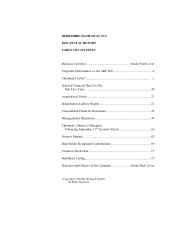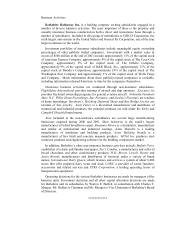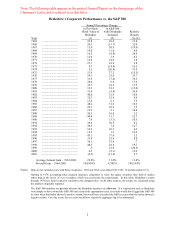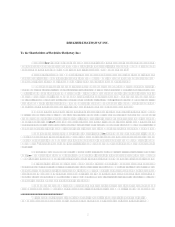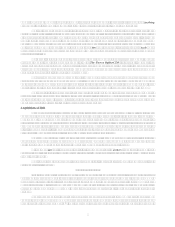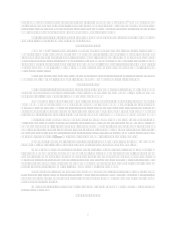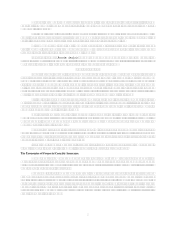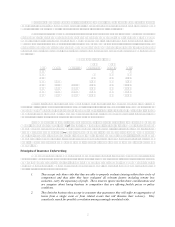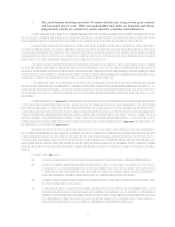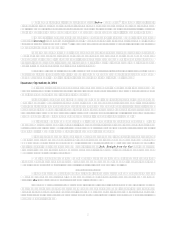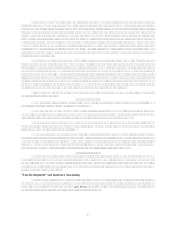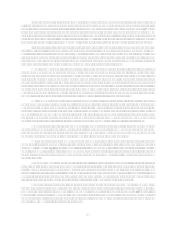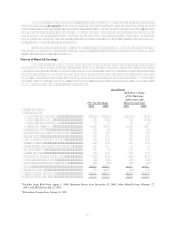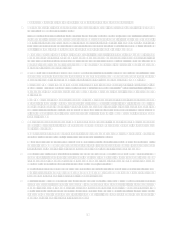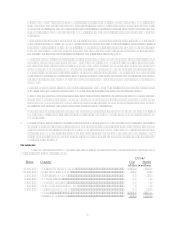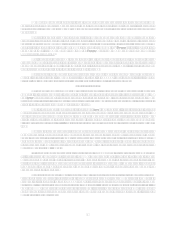Berkshire Hathaway 2001 Annual Report Download - page 6
Download and view the complete annual report
Please find page 6 of the 2001 Berkshire Hathaway annual report below. You can navigate through the pages in the report by either clicking on the pages listed below, or by using the keyword search tool below to find specific information within the annual report.5
the stock market were to close before the offers expiration. Throughout much of the 11th, Lew went through a
particularly wrenching experience: First, he had a son-in-law working in the World Trade Center who couldnt be
located; and second, he knew we had the option of backing away from our purchase. The story ended happily:
Lews son-in-law escaped serious harm, and Berkshire completed the transaction.
Trailer leasing is a cyclical business but one in which we should earn decent returns over time. Lew brings
a new talent to Berkshire, and we hope to expand in leasing.
* * * * * * * * * * * *
On December 3rd, I received a call from Craig Ponzio, owner of Larson-Juhl, the U.S. leader in custom-
made picture frames. Craig had bought the company in 1981 (after first working at its manufacturing plant while
attending college) and thereafter increased its sales from $3 million to $300 million. Though I had never heard of
Larson-Juhl before Craigs call, a few minutes talk with him made me think we would strike a deal. He was
straightforward in describing the business, cared about who bought it, and was realistic as to price. Two days later,
Craig and Steve McKenzie, his CEO, came to Omaha and in ninety minutes we reached an agreement. In ten days
we had signed a contract.
Larson-Juhl serves about 18,000 framing shops in the U.S. and is also the industry leader in Canada and
much of Europe. We expect to see opportunities for making complementary acquisitions in the future.
* * * * * * * * * * *
As I write this letter, creditors are considering an offer we have made for Fruit of the Loom. The company
entered bankruptcy a few years back, a victim both of too much debt and poor management. And, a good many
years before that, I had some Fruit of the Loom experience of my own.
In August 1955, I was one of five employees, including two secretaries, working for the three managers of
Graham-Newman Corporation, a New York investment company. Graham-Newman controlled Philadelphia and
Reading Coal and Iron (P&R), an anthracite producer that had excess cash, a tax loss carryforward, and a
declining business. At the time, I had a significant portion of my limited net worth invested in P&R shares,
reflecting my faith in the business talents of my bosses, Ben Graham, Jerry Newman and Howard (Micky) Newman.
This faith was rewarded when P&R purchased the Union Underwear Company from Jack Goldfarb for $15
million. Union (though it was then only a licensee of the name) produced Fruit of the Loom underwear. The
company possessed $5 million in cash $2.5 million of which P&R used for the purchase and was earning about
$3 million pre-tax, earnings that could be sheltered by the tax position of P&R. And, oh yes: Fully $9 million of the
remaining $12.5 million due was satisfied by non-interest-bearing notes, payable from 50% of any earnings Union
had in excess of $1 million. (Those were the days; I get goosebumps just thinking about such deals.)
Subsequently, Union bought the licensor of the Fruit of the Loom name and, along with P&R, was merged
into Northwest Industries. Fruit went on to achieve annual pre-tax earnings exceeding $200 million.
John Holland was responsible for Fruits operations in its most bountiful years. In 1996, however, John
retired, and management loaded the company with debt, in part to make a series of acquisitions that proved
disappointing. Bankruptcy followed. John was then rehired, and he undertook a major reworking of operations.
Before Johns return, deliveries were chaotic, costs soared and relations with key customers deteriorated. While
correcting these problems, John also reduced employment from a bloated 40,000 to 23,000. In short, hes been
restoring the old Fruit of the Loom, albeit in a much more competitive environment.
Stepping into Fruits bankruptcy proceedings, we made a proposal to creditors to which we attached no
financing conditions, even though our offer had to remain outstanding for many months. We did, however, insist on
a very unusual proviso: John had to be available to continue serving as CEO after we took over. To us, John and
the brand are Fruits key assets.
I was helped in this transaction by my friend and former boss, Micky Newman, now 81. What goes around
truly does come around.
* * * * * * * * * * * *

